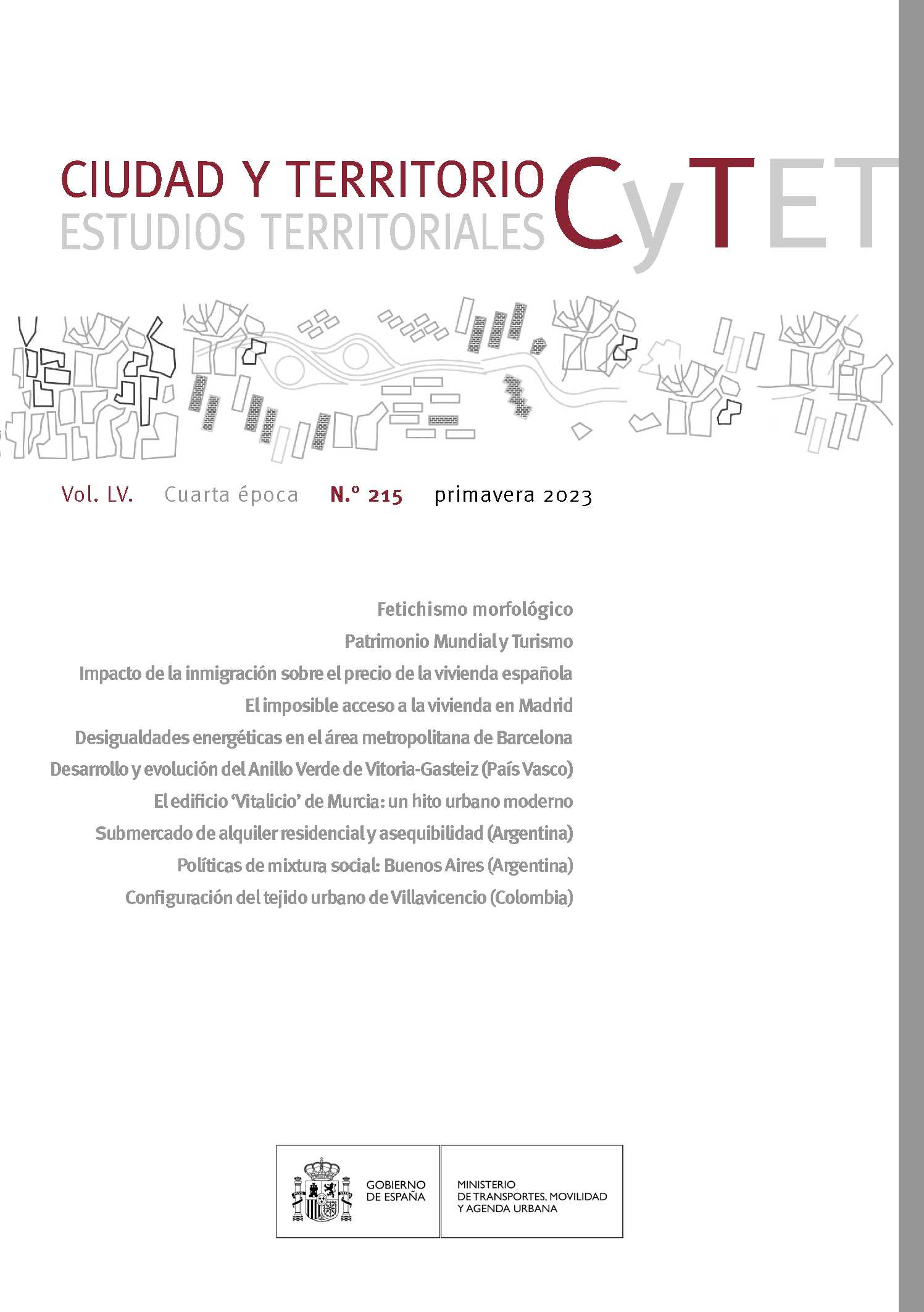The transformation of the Botanical Garden in Bogotá: the new Tropicario
DOI:
https://doi.org/10.37230/CyTET.2023.215.11Keywords:
Botanical garden, Tropicario, Bogotá, ColombiaAbstract
The Tropicario is inserted with respect in the extraordinary environment of the Botanical Garden of the Colombian capital. It is characterized by a cellular and modular architectural system that harmonizes well with the adjacent landscape system. The morphology of the module is a triangle with open vertices in plan: it is the shape of the section of the papyrus stem - a symbol of organic life that grows in wetlands, one of the basic ecosystems of the territory in which Bogotà was established. As a strategy for the conservation and protection of ecosystems, the Botanical Garden is developing the "Nodes of Diversity" initiative, a project that promotes new botanical expeditions in different areas of the country, and which aims to protect some of the most threatened ecosystems of Colombia. The Tropicario is the new symbol of this project: a space for raising public awareness of environmental issues.
Downloads
References
AA.VV, Autores varios (2014): Tropicario. Revista Escala N. 230, edición 51, 2014 N. 230, Año 51. Bogotá.
Cooper. A. (2021): En AA.VV. De vuelta al trópico, Medellín, Colombia, Alcaldía Medellín.
Arango, S.& Niño C.& Ramírez, J.& Saldarriaga, A. (2012): Bogota y la sabana. Guia de arquitectura y paisaje. Bogotá, Colombia, Universidad Nacional de Colombia ed.
Escovar, A. (2007): Guía Elarqa de Arquitectura Bogotá. Bogotá, Colombia, Ediciones Gamma.
Saldarriaga, A. (2006): Bogotá siglo XX: urbanismo, arquitectura y vida urbana. Bogotá, Alcaldía Mayor de Bogotá.
Saldarriaga, A. (2021): Los lugares habitados. Bogotá, Colombia, Laguna libros ed.
Urrea, T. (2021): Rogelio Salmona. De la calle a la alfombra. Bogotá, Colombia. Ediciones Uniandes - Universidad Nacional de Colombia.
Published
How to Cite
Issue
Section
License
Copyright (c) 2022 Luca Bullaro

This work is licensed under a Creative Commons Attribution-NonCommercial-NoDerivatives 4.0 International License.
Considering the provisions of the current legislation on Intellectual Property, and in accordance with them, all authors publishing in CyTET give -in a non-exclusive way and without time limit- to the Ministry of Transport, Mobility and Urban Agenda the rights to disseminate, reproduce, communicate and distribute in any current or future format, on paper or electronic, the original or derived version of their work under a Creative Commons Attribution-NonCommercial-NoDerivative 4.0 license International (CC BY-NC-ND 4.0), as well as to include or assign to third parties the inclusion of its content in national and international indexes, repositories and databases, with reference and recognition in any case of its authorship.
In addition, when sending the work, the author(s) declares that it is an original work in which the sources that have been used are recognized, committing to respect the scientific evidence, to no longer modify the original data and to verify or refute its hypothesis. Author(s) also declare that the essential content of the work has not been previously published nor will it be published in any other publication while it is under evaluation by CyTET; and that it has not been simultaneously sent to another journal.
Authors must sign a Transfer of Rights Form, which will be sent to them from the CyTET Secretariat once the article is accepted for publication.
With the aim of promoting the dissemination of knowledge, CyTET joins the Open Journal Access (OA) movement and delivers all of its content to various national and international indexes, repositories and databases under this protocol; therefore, the submission of a work to be published in the journal presupposes the explicit acceptance by the author of this distribution method.
Authors are encouraged to reproduce and host their work published in CyTET in institutional repositories, web pages, etc. with the intention of contributing to the improvement of the transfer of knowledge and the citation of said works.








 Enlace a CyTET en Linkedin
Enlace a CyTET en Linkedin